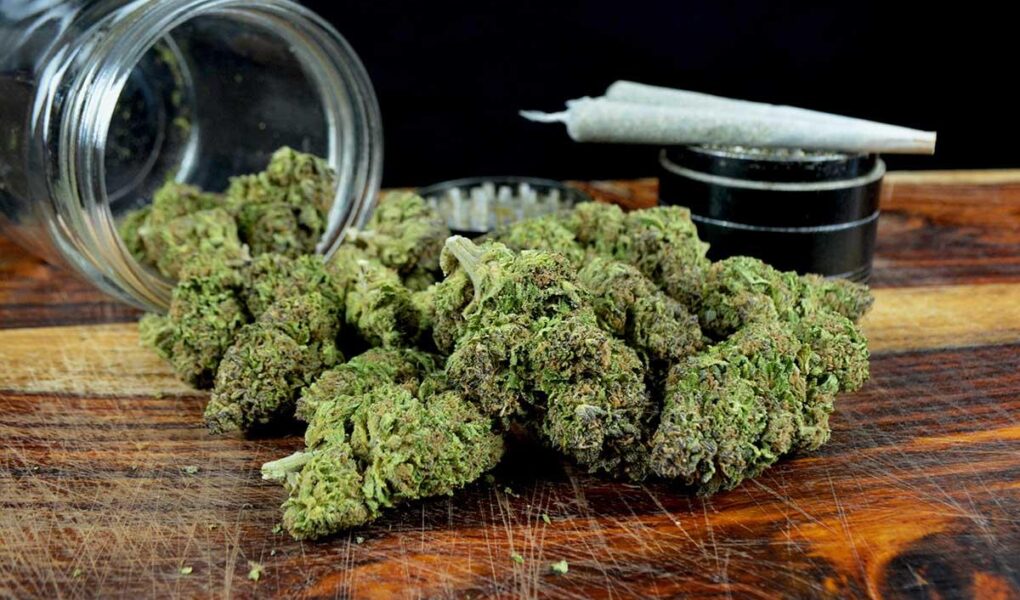In the tapestry of human experience, few substances evoke as much curiosity and controversy as cannabis, commonly known as weed. From its ancient origins as a medicinal herb to its modern-day status as a staple of both recreational and therapeutic use, the multifaceted nature of this plant invites a deep exploration into its many dimensions. What is weed, really? Is it merely a drug, or is it a cultural phenomenon entwined with art, politics, and social change? As societal attitudes continue to evolve, understanding the complexities of cannabis includes delving into its biology, medical applications, legal status, and the myriad ways it impacts our lives. Join us as we embark on a journey to uncover the essence of weed—a plant that has ignited passion, sparked debate, and ultimately reshaped how we perceive wellness and intoxication in our world today.
Table of Contents
- Understanding the Composition of Cannabis and Its Effects
- Exploring the Medical Uses of Cannabis in Modern Medicine
- Navigating the Legal Landscape of Cannabis Usage
- Best Practices for Responsible Consumption and Safety
- Q&A
- Final Thoughts
Understanding the Composition of Cannabis and Its Effects
Cannabis is a complex plant with a rich composition that contributes to its diverse effects on the mind and body. The primary components of cannabis include cannabinoids, terpenes, and flavonoids. Among these, cannabinoids are the most significant, most notably tetrahydrocannabinol (THC) and cannabidiol (CBD). THC is known for its psychoactive properties, providing the euphoric “high” commonly associated with cannabis use, while CBD is celebrated for its therapeutic benefits without the intoxicating effects. Additionally, terpenes are aromatic compounds that influence the scent and flavor of cannabis, also playing a vital role in its effects by modulating the impact of cannabinoids on the body.
Understanding these components helps explain why different strains of cannabis can have varying effects. For instance, sativa strains are often linked to uplifting and energizing effects, while indica strains may promote relaxation and sedation. The interplay between cannabinoids and terpenes results in what is known as the “entourage effect,” where the combination of these compounds works synergistically to enhance the overall experience. Here’s a quick overview of some common strains and their general effects:
| Strain Type | Common Effects |
|---|---|
| Sativa | Uplifting, Energetic, Creative |
| Indica | Relaxing, Sedative, Body High |
| Hybrid | Balanced, Versatile, Varies by strain |
Exploring the Medical Uses of Cannabis in Modern Medicine
The integration of cannabis into modern medical practices has expanded significantly as research uncovers its potential therapeutic benefits. Cannabinoids, the active compounds in cannabis, interact with the body’s endocannabinoid system, influencing various physiological processes. Medical professionals have begun to consider cannabis as a treatment option for a range of conditions, such as:
- Chronic pain relief
- Reducing inflammation
- Management of anxiety and depression
- Alleviating symptoms of multiple sclerosis
- Mitigating side effects of chemotherapy
With this growing interest, many healthcare providers focus on the therapeutic properties of both THC (tetrahydrocannabinol) and CBD (cannabidiol). While THC provides psychoactive effects that can help with pain management and muscle spasms, CBD is celebrated for its non-intoxicating properties, making it appealing for patients seeking relief without the high. A recent study tabled the various ailments that cannabis may address in a clinical setting:
| Ailment | Common Treatment Goals |
|---|---|
| Chronic Pain | Reduction or elimination of pain |
| Epilepsy | Decrease frequency of seizures |
| Sleep Disorders | Improved sleep quality |
| Appetite Loss | Stimulating appetite |
Navigating the Legal Landscape of Cannabis Usage
The evolving legal status of cannabis across various jurisdictions has created a complex landscape that individuals must navigate when considering its use. In some regions, it has been fully legalized for recreational and medicinal purposes, while in others, it remains strictly prohibited. This inconsistency is influenced by a myriad of factors including cultural attitudes, political movements, and scientific research. Consumers should familiarize themselves with local laws to avoid legal complications, which can vary widely even within the same country. For instance, some places may allow limited personal use but require strict adherence to regulatory frameworks in terms of sales and distribution.
When assessing the legal status of cannabis, it’s also important to understand how regulations affect not just personal use, but also commercial opportunities. Businesses looking to enter the cannabis industry must consider various aspects such as compliance with local zoning laws, testing requirements, and licenses for cultivation or distribution. Here’s a brief comparison of cannabis regulations in selected regions:
| Region | Legal Status | Usage Type |
|---|---|---|
| California | Legal | Recreational & Medicinal |
| Texas | Illegal | Medicinal (limited) |
| Canada | Legal | Recreational & Medicinal |
| Germany | Legal | Medicinal only |
Best Practices for Responsible Consumption and Safety
Engaging in responsible consumption of cannabis is essential for ensuring both personal safety and the well-being of the community. To fully appreciate its effects and minimize potential risks, consider the following best practices:
- Know Your Limits: Start with low doses, especially if you are new to cannabis or trying a different strain.
- Understand the Product: Research the THC and CBD content in your chosen strain to gauge its potency.
- Set and Setting: Choose a comfortable and safe environment for consumption, ideally with trusted friends.
- Stay Hydrated: Keep water handy to avoid dehydration, which can be a side effect of marijuana consumption.
- Age Matters: Ensure you are of legal age to consume cannabis in your jurisdiction.
Safety practices extend beyond personal consumption. It’s important to foster a culture of awareness and responsibility among peers. Here are some thoughtful considerations:
| Consideration | Description |
|---|---|
| Transportation | Do not drive or operate heavy machinery while under the influence. |
| Purchase Wisely | Buy from licensed dispensaries to ensure product quality and safety. |
| Educate Others | Share knowledge about responsible use with friends and family. |
Q&A
Q&A: Understanding Weed as a Drug
Q1: What exactly is “weed”?
A: “Weed” is a colloquial term for cannabis, a flowering plant that contains over 100 chemical compounds known as cannabinoids. The most well-known of these are THC (tetrahydrocannabinol) and CBD (cannabidiol). THC is primarily responsible for the psychoactive effects often associated with marijuana use, while CBD is celebrated for its potential therapeutic benefits without the high.
Q2: How is weed used?
A: Weed can be consumed in a variety of ways, including smoking it in joints, pipes, or bongs; vaporizing; consuming edibles like brownies or gummies; or using oils and tinctures. Each method offers different onset times and experiences, allowing users to select their preferred way of enjoyment or relief.
Q3: What are the effects of using weed?
A: The effects of weed can vary significantly depending on the strain and method of consumption. Common effects include relaxation, euphoria, altered perception, and increased appetite. However, some may experience anxiety or paranoia, especially with strains high in THC. Individual responses to weed can differ due to factors such as tolerance, body chemistry, and the surrounding environment.
Q4: Is weed addictive?
A: While cannabis is often perceived as less addictive than substances like alcohol or opioids, it can still lead to cannabis use disorder in some individuals. Research indicates that about 9% of those who use marijuana will develop a dependency, and this figure rises for those who start in their teens or use it daily.
Q5: Are there medical uses for weed?
A: Yes, cannabis has been recognized for its potential medicinal properties. Medical marijuana is prescribed for conditions such as chronic pain, epilepsy, multiple sclerosis, and nausea associated with chemotherapy. Studies continue to explore its efficacy and safety for various health issues, with many patients reporting significant relief.
Q6: How is weed regulated in different places?
A: The regulation of weed varies widely across the globe. In some countries or states, cannabis is fully legal for recreational and medical use; in others, it’s available only for medical purposes, and in many places, it’s completely illegal. The landscape is shifting as public opinion changes and more research emerges regarding its benefits and risks.
Q7: What are the potential risks of using weed?
A: Alongside its potential benefits, weed carries risks, particularly for young users whose brains are still developing. These can include impaired cognitive function, altered brain development, and exacerbation of mental health disorders. Driving under the influence of cannabis is also dangerous and can lead to accidents, similar to alcohol.
Q8: What does the future hold for weed as a drug?
A: The future of weed is dynamic and looks promising. As legalization movements gain traction and research expands, we can expect to see more comprehensive regulation, an influx of cannabis products, and possibly greater acceptance in both social and medical arenas. Public discourse continues to shape laws and perceptions, indicating that cannabis will remain a hot topic for years to come.
This Q&A aims to clarify common questions about weed, providing a balanced overview of its nature, effects, and implications in society. Whether for recreational enjoyment or medicinal purposes, understanding cannabis is crucial in navigating its complex landscape.
Final Thoughts
As we draw the curtains on our exploration of cannabis, commonly referred to as weed, we find ourselves at the intersection of science, culture, and personal choice. From its historical roots as a medicinal herb to its contentious status in contemporary society, weed is more than just a substance; it’s a symbol of evolving perspectives on health, wellness, and legality. As research continues to unlock its potential benefits and risks, it remains essential for individuals to approach cannabis with an informed mindset, understanding not only its complexities but also its impact on their lives and communities. Whether you view it as a therapeutic ally or a topic worthy of caution, the conversation around weed is far from over. As society navigates its place in our lives, one thing is certain: the story of cannabis is still being written, and each of us has a role to play in shaping its future.



